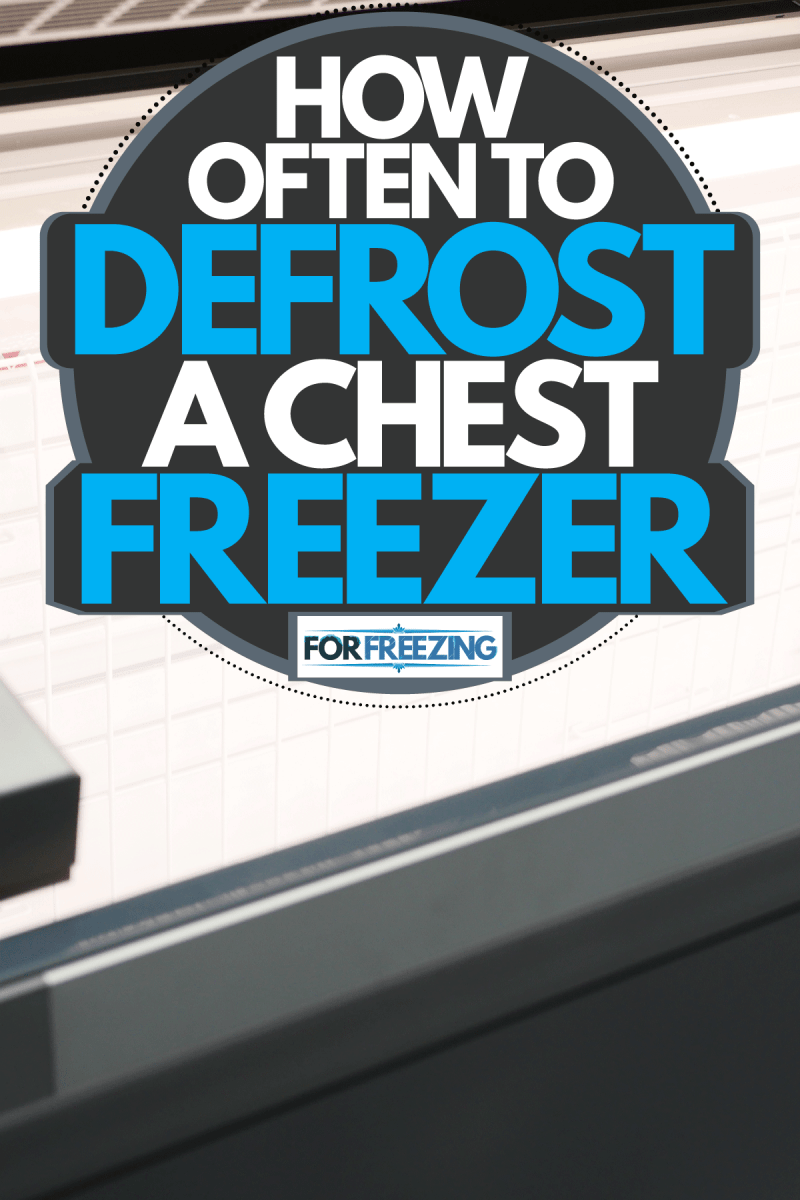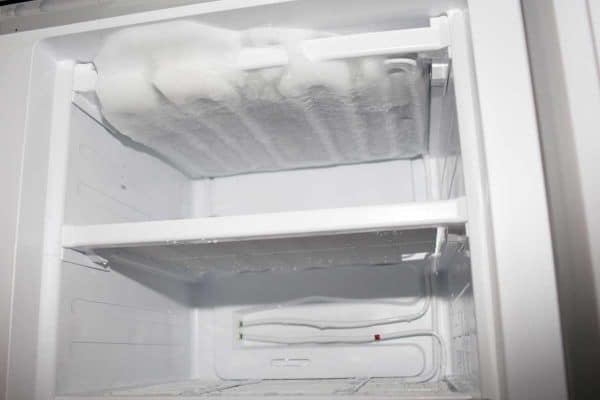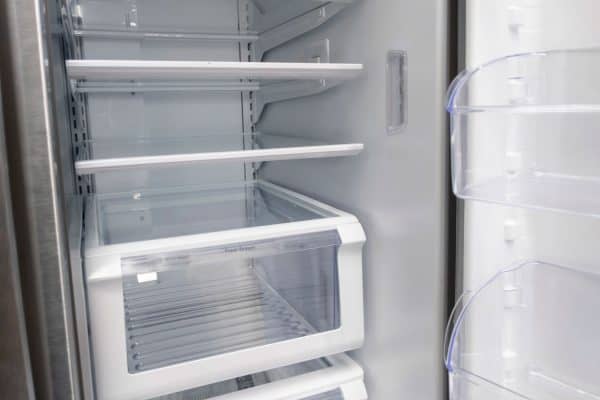Have your utility bills been skyrocketing and your chest freezer’s efficiency is decreasing? This might be a sign that your appliance is having problems, such as frost buildup. Fortunately, you can take control of this through defrosting. But how often should you carry this out? We looked for answers for you through conscientious research.
In general, you need to defrost your chest freezer every 6 to 12 months or twice a year to ensure that there is no excess formation of ice inside the freezer. However, this frequency will change depending on the level of humidity and frequency of frost formation. High humidity can cause the frost to build more frequently. In this case, you need to defrost or collect the ice 4 times a year to avoid ruining the coil, which can cost you your entire appliance.
Remember that warm, moisture-laden air collides with cold air every time you open your chest freezer. This results in temperature fluctuations that can cause condensation inside the freezer. Aside from that, there is some more important information in this blog that will help determine the times when you should defrost your chest freezer. Continue reading to learn what those are.
NOTE: WE MAY GET A COMMISSION IF YOU DECIDE TO MAKE A PURCHASE THROUGH THESE LINKS. THERE'S ADDITIONAL NO COST TO YOU. CHECK THE BOTTOM OF THE PAGE FOR MORE INFORMATION.

When to defrost a chest freezer?
The 6-12 month defrosting frequency can be difficult to determine without a schedule or subtle indications, right? That’s why most people try to put it off most of the time. So, here are ways to tell when it’s time to defrost your chest freezer:
- On your phone, make a reminder 6 and 12 months after you bought your unit.
- Defrost when the ice in the freezer interior walls is already more than 1/4-inch thick.
- Keep track of your chest freezer usage habits. If you keep on opening the freezer more often, defrost your appliance every 3 months or 4 times a year.
What to consider when defrosting chest freezer?
Here, we will tackle the most important determinant of how often you should be defrosting your chest freezer. Inability to consider this can cost you more in the long run, so read on.
The environment and climate in your Region
Your locality and the area in your home where you keep your chest freezer have an inherent connection with the defrosting frequency.
The ideal environment for a chest freezer is a place with low humidity. If the ambient temperature and air around your chest freezer are too high, it not only results in frost buildup but also the formation of rust on the metal compressor and condenser that can further shorten its service year. In addition, a warm environment makes your chest freezer work harder to keep the temperature inside steady.
But since you can’t control your environment, the only solution would be placing your chest freezer in a well-insulated area in your homes like the basement or the garage. This will allow proper air clearance for the appliance to keep condensation in check.
What is the best way to defrost a chest freezer?
The best way to defrost a chest freezer does not exist. The efficiency of each defrosting varies per circumstance, so labeling them as good, better, or best is difficult. That's why it's better to look at each of the methods below, so you'll know which one will work for you best:
1. Let the ice melt on its own
As the simplest method, all you need to do is unplug the chest freezer and keep it open until the ice has fully melted. It’s time-consuming, but it guarantees you and the appliance's safety. You can even do it overnight.
But don’t just immediately unplug it; you need proper preparation. Make sure you first open the drain plug usually found at the bottom of the chest freezer. Place a pan under the drain to serve as a catch basin for the water. Since this process can be a bit messy with all the ice melting, you might consider taking your freezer out in the garage to avoid repetitive mopping.
2. Leave a bowl of hot water inside the freezer
Want to speed up the defrosting after unplugging? Try putting a bowl of boiling water inside the freezer and then closing it. The steam from the boiling water will help loosen and melt the ice much faster. Replace the water 3 times with 10 minutes intervals in between.
This method comes with a bit of a risk of damage to the appliance, though. That’s why you should not forget to first put a wet towel in the area where you’ll place the bowl of hot water. This will serve as a cushion to keep the plastic construction from warping.
3. Scrape the ice
If you lack patience and want things done fast, consider scraping the ice from the interior walls. While wearing protective gloves, scrape the ice using an ice scraper, wooden spoon, or spatula and place the ice in a bucket.
This method allows you to finish defrosting in just a few hours. That’s probably the reason why most people use this method in conjunction with the next defrosting method.
4. Blow warm air into the freezer
For this method, you will need a fan or a hairdryer. Unplug your chest freezer first and keep it open. Position the hair dryer 12 inches away from the appliance interior. Then, start melting the ice from one area to another. Ensure that you keep the distance constant the entire time because the hot air can damage the plastic construction and coil inside the unit.
Since you can’t keep the hairdryer working the whole time, you will need to take intermissions in between to prevent the hairdryer from overheating. Also, remember to keep the hairdryer’s cord from the melting ice to steer clear of electrocution.
If your locality’s climate is hot, you may use an electric fan in place of the hairdryer to circulate warm air in the chest freezer. Set a fan in front of an open chest freezer and wait for the ice to melt. It may seem ineffective, but this method is much faster than the first method.
5. Wipe the freezer interior with a hot towel
Now, if you don’t have a hairdryer and you’re not living in a warm place, using a hot towel in defrosting will save you the hassle.
Prepare a thick towel, tongs, protective gloves, and a bowl of boiling water. Soak the towel in the warm water for 1 minute before removing it with the tong. Place the towel in the freezer and wait for the warmth to reduce before you start wiping the chunk of ice. Do this process repeatedly until the ice has fully melted.
How long does it take to defrost a freezer?
The chest freezer defrosting duration varies according to the method you use and the thickness of ice in the freezer. But generally, it would take at least 2 to 24 hours for all the ice to melt. It can last longer if you only defrost annually or once every 2 years.
Do all chest freezers need to be defrosted?
All types of freezers, from upright to built-in fridge freezers and chest freezers, must be defrosted regularly.
Defrosting is a maintenance task essential in keeping chest freezers functioning at maximum efficiency with less energy consumption. If not done right and routinely, you run the risk of frequent food spoilage, considerable increment in your energy bills, and a shorter lifespan of the appliance.
How do you defrost a chest freezer without turning it off?
Unless it comes with an automatic defrosting system, you will always need to turn off your chest freezer when defrosting. Unlike a built-in fridge freezer that comes with different temperature controls for the freezer, chest freezers generally only have one temperature controller.
So when you need to defrost and still have a considerable amount of food stocked in the chest freezer, transfer them to the fridge first to avoid spoilage. Prepare a hearty food feast with any excess food that can't be stored in the fridge.
The bottom line
Chest freezers have to be defrosted constantly after purchase every 6 months. This interval can climb up to 4 times a year, depending on your freezer usage habits. Avoid defrosting your chest freezers only once in 2 years because you risk damaging your appliance and shortening its expected lifespan.



![Woman hand open plastic white container drawer in new refrigerator. How To Put A Freezer Drawer Back In [Inc. For Specific Brands]](https://forfreezing.com/wp-content/uploads/2021/09/Woman-hand-open-plastic-white-container-drawer-in-new-refrigerator.-How-To-Put-A-Freezer-Drawer-Back-In-Inc.-For-Specific-Brands-600x400.png)